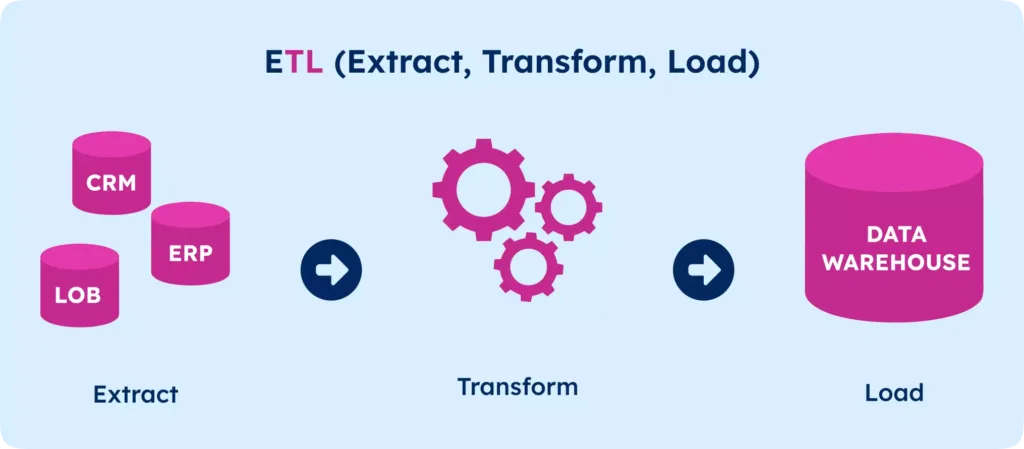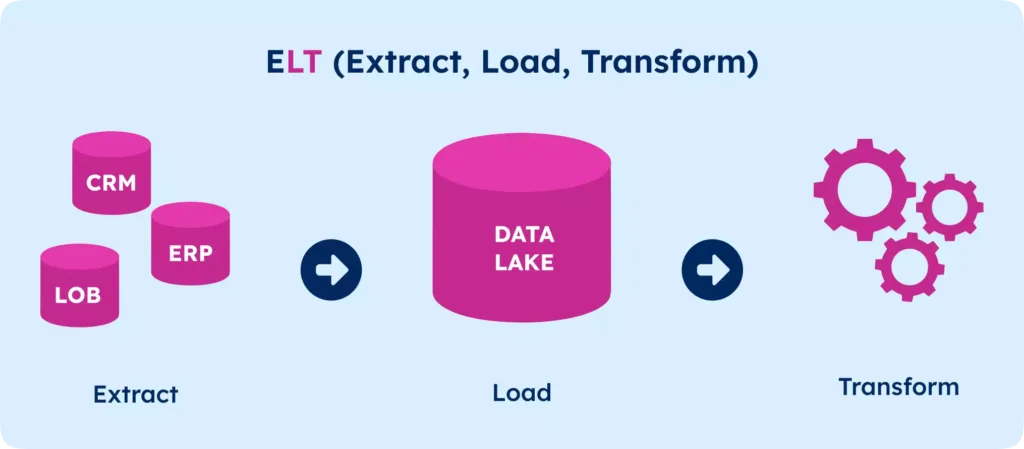Are you struggling to manage vast location-based data in your business operations? Enterprise Location Data Management (ELDM) is essential for turning geographical information into strategic assets in today’s data-driven world. This guide will show you how to harness the power of location data to boost your business efficiency and decision-making.
💡 Use the comprehensive and up-to-date GeoPostcodes database to ensure data accuracy and reliability, paving the way for informed decisions and optimization. Download a free sample here.
Check out our articles on Mapping Natural Hazard Risk Areas and International Address Formats to explore how accurate location data can transform your business and its associated challenges.
What is ELDM?
Enterprise Location Data Management (ELDM) is like having a GPS for your business data. It involves systematically managing and governing location-based data using various processes and tools. These help you collect, store, analyze, and utilize geographical data, supporting your operations and strategic decisions.
Now, let’s dive into the key components that make ELDM effective.
Key Components of ELDM
Data Collection and Integration
Data Collection and Integration are the first steps in ELDM. Imagine gathering puzzle pieces from various boxes; integration means combining them into a clear picture.
ETL (Extract, Transform, Load) and ELT (Extract, Load, Transform) are two primary methods for data integration. ETL cleans data before loading it into a data warehouse, ensuring that only clean, standardized data is stored. Conversely, ELT loads all data into the warehouse first, then performs the cleansing and transformation processes. Both methods have their advantages:
- ETL: Ideal for smaller datasets where we need to ensure data quality before storage

- ELT: Suitable for large datasets, allowing for more flexibility and scalability

Effective integration consolidates all your data into one accessible system.
For example, we can build a standardized zip code database by combining zip code data with different standards for market research, fraud detection, and territory mapping.
You must consider the source of all your data and its impact on quality. Your data must be up-to-date because boundaries, addresses, and zip codes change frequently. Also, different countries use different zip code formats, adding complexity to the aggregation process.
Businesses can overcome these challenges by using standardized data formats and reliable sources like GeoPostcodes and ensure seamless data integration.
Data Standardization and Cleansing
Data Standardization and Cleansing involves converting location data into a consistent format, making it easier to analyze and use. Think of it as tidying up your workspace. Data cleansing removes inaccuracies and duplicates, ensuring high-quality data. This step is crucial for maintaining data integrity and usability.

Data Governance
Data governance ensures data quality, consistency, and accuracy. It achieves this by defining data standards, identifying data owners, and establishing data use and access guidelines. It addresses vital questions, such as identifying the critical data elements (CDEs) to manage across the organization and determining the respective data owners responsible for them.
With ownership established, the focus shifts to data retention policies and their enforcement, ensuring compliance with relevant regulations. Equally important are the procedures for managing data changes and updates, which we must meticulously document and track to maintain data integrity.
Finally, we ensure that the entire data governance framework is followed and checked regularly to ensure we comply with our data policies and standards.
Data Security and Compliance
Securing location data is critical to prevent breaches and ensure privacy. Data security measures should include encryption, access controls, and regular security audits. Compliance with regulations such as GDPR is essential to avoid legal complications.
For example, a global logistics company must comply with GDPR when handling customers’ location data in the EU. Implementing robust encryption methods and access controls and conducting regular security audits can help maintain compliance and protect sensitive data.
Data Analysis and Visualization
Analyzing and visualizing location data helps organizations make informed decisions. Tools like Geographic Information Systems (GIS) and data visualization software can transform raw data into actionable insights, allowing businesses to optimize operations and improve customer experiences.
For instance, using GeoPostcodes’ zip code data in ArcGIS allows you to perform various activities, such as market and customer analysis, site analysis, and territory mapping, which involve data analysis and visualization. Businesses can identify high-potential markets, optimize delivery routes, and plan new store locations based on visualized data patterns.
Tools and Technologies
Effective ELDM requires the use of advanced tools and technologies. Here are some essential ones:
GIS (Geographic Information Systems): For mapping and analyzing spatial data
Data Visualization Software: Using tools like Tableau and Power BI to create zip code maps
Data Governance Tools: Platforms like Collibra and Alation for managing data governance frameworks
Benefits of ELDM
Improved Decision-Making
Access to accurate and timely location data allows businesses to make better strategic decisions. Analyzing customer locations can help optimize delivery routes, reduce costs, and improve service efficiency.
Enhanced Operational Efficiency
By consolidating and standardizing location data, organizations can streamline their operations. It increases efficiency in supply chain management, logistics, and resource allocation processes.
Increased Data Quality and Trust
Data governance and standardization improve the quality and reliability of location data. High-quality data builds trust among stakeholders, ensuring all stakeholders make decisions based on accurate information.
Compliance and Risk Management
Effective ELDM ensures compliance with data protection regulations, reducing the risk of legal issues. It also helps identify and mitigate risks associated with data breaches and inaccuracies.
Conclusion
Location Data Management (ELDM) is a game-changer for organizations aiming to harness location-based data’s power. Implementing effective ELDM practices can improve decision-making, enhance operational efficiency, and ensure regulatory compliance.
At GeoPostcodes, we provide the most comprehensive postal and zip code database and expertise to help you achieve these goals.
Start your journey towards successful ELDM today and witness the transformative impact on your business with GeoPostcodes by your side.
FAQ
What is location data management?
Location data management ensures that business information is accurate and uniform across various platforms and sources. This accuracy helps customers quickly find the correct information and directions to the business or entity’s location.
What is an Enterprise Data Management System?
An Enterprise Data Management system is a comprehensive strategic plan for managing an enterprise’s data and maintaining the highest data quality, security, and accessibility standards.
It encompasses an organization’s entire lifecycle, from inventory to governance, to enhance decision-making processes and accomplish business objectives.
What is Oracle EDM used for?
Oracle EDM is a cloud-based solution for master data management that aids enterprises in managing, aligning, and sharing enterprise data across various applications and domains.
It facilitates a quicker and more efficient adjustment and reaction to changes in business conditions, including cloud migration, mergers and acquisitions, or metadata reconciliation.
What is RDM in data management?
RDM stands for Reference data management, which focuses on organizing, renewing, and consolidating reference data.
Reference data is crucial for categorizing and providing context to other data types, such as product, currency, or country codes.
What is location master data management, and why is it important?
Location master data management involves the processes and systems used to manage and maintain accurate, consistent, and reliable location data across an enterprise.
It is crucial because precise location data is foundational for operations, logistics, and decision-making. It helps reduce errors, improve service delivery, and enhance customer satisfaction.
How do enterprise data management solutions support location data management?
Enterprise data management solutions provide comprehensive tools and frameworks for handling large volumes of data, including location data. These solutions facilitate data integration, ensuring that location data from various sources is consolidated and consistent.
They also offer data cleansing, enrichment, and governance features essential for maintaining high-quality, accurate data.
What are the common challenges in data management processes for location data?
Common challenges in data management processes for location data include poor data quality, data silos, and the complexity of integrating data from multiple sources. Inaccurate or incomplete data can lead to inefficiencies and errors in business processes.
Effective data management processes involve regular data validation, cleansing, and enrichment to maintain high-quality data assets.
How can I enrich location data to benefit an organization?
To enrich location data, you can add additional layers of information such as demographic data, geospatial information, and historical trends. This process makes the data more valuable and actionable.
Enriching location data can improve marketing strategies, enhance customer relationship management, and optimize logistics and supply chain operations by providing deeper insights and more precise targeting.
How can businesses effectively handle location data to ensure accuracy and usefulness?
Businesses can effectively handle location data by implementing a structured data management approach. It involves several key steps:
Data Collection and Integration: Gathering location data from reliable sources and integrating it into a centralized system.
Standardization and Cleansing: Converting data into a consistent format and removing inaccuracies to maintain high data quality.
Governance: Establishing policies and procedures to ensure data accuracy, consistency, and security.
Analysis and Visualization: Using GIS (Geographic Information Systems) to transform raw data into actionable insights.
By following these steps, businesses can ensure their location data is accurate, reliable, and useful for strategic decisions. Data providers like GeoPostcodes can help maintain structured data, offering comprehensive datasets updated regularly to reflect the latest changes in boundaries, addresses, and postcodes.





